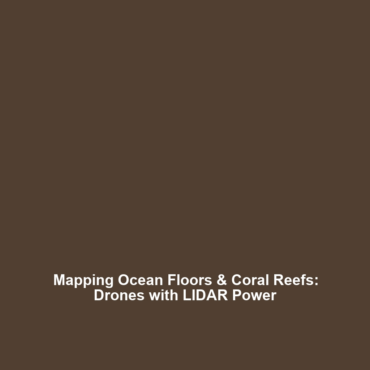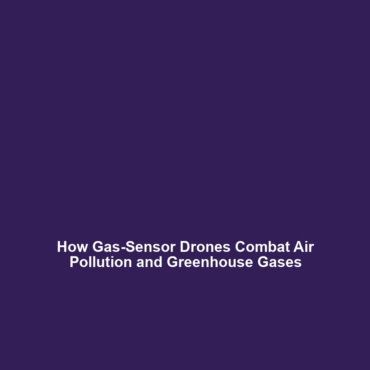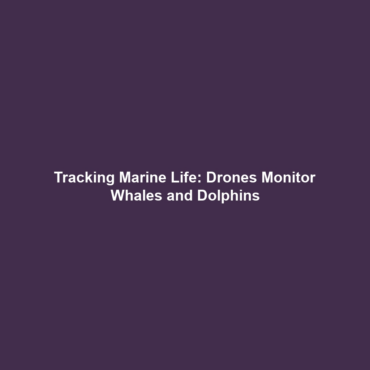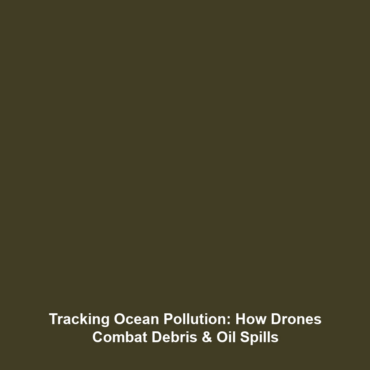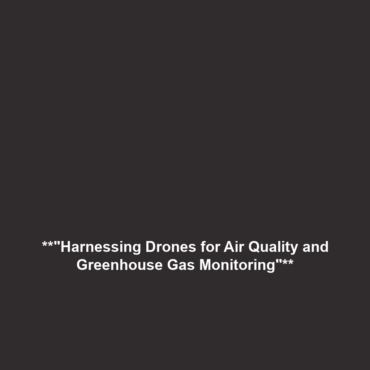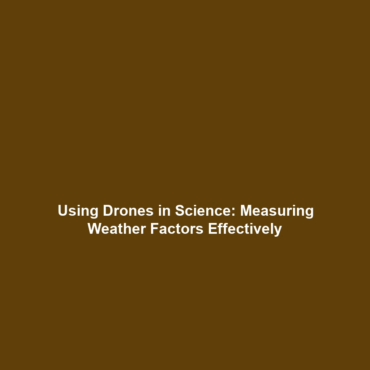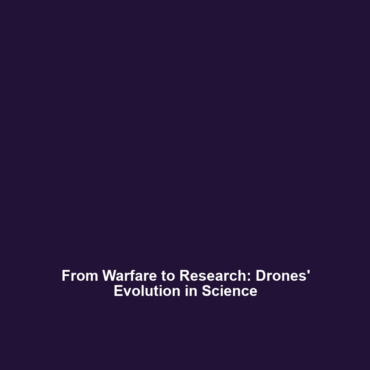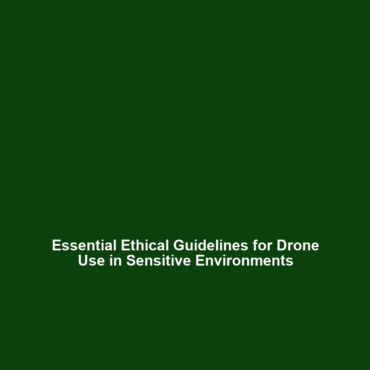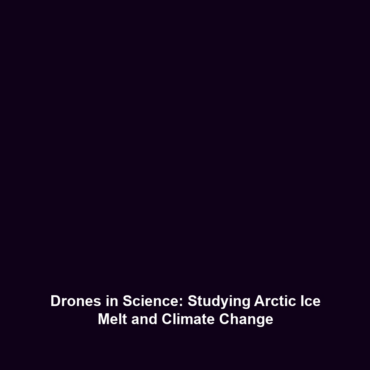How Drones Equipped with LIDAR and Cameras Map Ocean Floors, Coral Reefs, and Coastal Erosion
Introduction
Drones are transforming scientific research, particularly in the intricate fields of marine studies and environmental monitoring. Using advanced LIDAR and high-resolution cameras, these aerial vehicles can explore and map ocean floors, coral reefs, and coastal erosion with unparalleled efficiency. Understanding how drones equipped with these technologies operate is crucial, as this innovation not only enhances data collection but also contributes significantly to environmental conservation efforts. As part of the broader category of Drones in Science, these technologies are setting new standards in marine research.
Key Concepts
The core principles of using drones equipped with LIDAR and cameras for mapping involve advanced remote sensing techniques and data analysis. Key concepts include:
- LIDAR Technology: LIDAR (Light Detection and Ranging) uses laser pulses to measure distances between the drone and the ocean surface or coral structures, creating detailed 3D maps.
- Aerial Imaging: High-definition cameras capture images of underwater environments, supporting the identification of various marine species and habitats.
- Geospatial Analysis: Data collected from drones are analyzed to assess coastal erosion, habitat health, and ecological changes over time.
These technologies contribute significantly to the field of Drones in Science, making remote marine exploration more accessible and efficient.
Applications and Real-World Uses
The practical applications of drones equipped with LIDAR and cameras in the scientific field are extensive. Some notable examples include:
- Mapping Coral Reefs: Scientists use drones to capture detailed imagery and 3D maps of coral reefs, allowing for better assessment of reef health and biodiversity.
- Studying Coastal Erosion: By monitoring coastal areas, drones help identify areas of significant erosion, enabling timely intervention and management strategies.
- Deep-Sea Exploration: Equipped with LIDAR, drones can venture into previously inaccessible underwater terrains, expanding our understanding of marine ecosystems.
These applications highlight how drones equipped with LIDAR and cameras are used in Drones in Science to tackle pressing environmental issues.
Current Challenges
Despite the advantages, several challenges hinder the widespread use of drones in mapping ocean floors and coral reefs. Key issues include:
- Data Processing Limitations: Large volumes of data generated by LIDAR and aerial imaging require significant processing power and advanced analytical techniques.
- Regulatory Hurdles: Navigating complex airspace regulations can impede drone operations, especially in sensitive marine areas.
- Technical Constraints: Limitations in battery life and payload capacity restrict the duration and extent of drone missions.
Addressing these challenges of mapping ocean floors with drones is essential for advancing research in this field.
Future Research and Innovations
Looking ahead, numerous innovations and research initiatives are focused on enhancing how drones equipped with LIDAR and cameras operate. Key developments include:
- Artificial Intelligence Integration: AI technologies are being developed to improve data processing and analysis, resulting in faster insights from collected data.
- Hybrid Systems: Next-gen drones may combine multiple sensing technologies, allowing for more comprehensive environmental assessments.
- Enhanced Durability: Future drones may feature improved materials and designs, enabling them to withstand harsh maritime conditions.
These breakthroughs will undoubtedly shape the future of Drones in Science and improve our understanding of marine environments.
Conclusion
In summary, drones equipped with LIDAR and cameras are revolutionizing the mapping of ocean floors, coral reefs, and coastal erosion. Their significance within the scope of Drones in Science highlights the potential for improved marine conservation and research. As advancements continue to emerge, it is essential to stay informed about these technologies and their applications. For further reading on the implications of drone technology, check out our articles on marine conservation and environmental technology.
